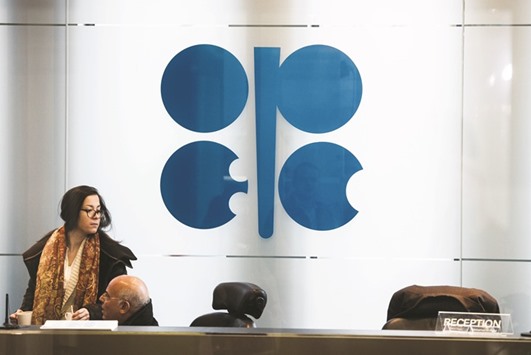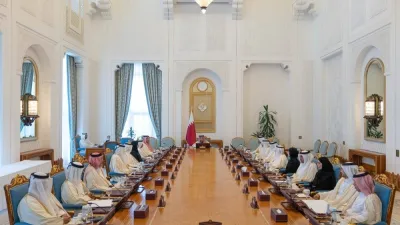Opec will extend an accord that trims production, even as surging US output threatens the group’s goal of draining excess supply, according to a Bloomberg survey.
The Organisation of Petroleum Exporting Countries (Opec) and its allies will prolong the curbs for at least six months when ministers meet on May 25 in Vienna, according to 24 of 25 analysts polled this week. The respondents were split on whether the extension will last for six or nine months, and were also at odds over the probability of the cuts rebalancing the market. “They don’t have much of a choice other than to extend the cuts,” Kim Brady, senior managing director at SOLIC Capital in Evanston, Illinois, said by telephone. “They have said they will do whatever needs to be done to balance the market. They haven’t quite achieved that yet.”
Russia and Saudi Arabia, the largest of the 24 oil exporters that agreed to cut output for the first six months of the year, said on Monday that they favour a nine-month extension of the curbs. Prolonged curbs are needed to reduce global stockpiles to the five-year average, the energy ministers of the world’s biggest crude producers said. Opec’s Kuwait and Venezuela, and non-members Oman and South Sudan support the proposal.
Global benchmark Brent crude was trading up 0.6% at $52.84 a barrel as of 12 p.m. in Singapore and heading for a 4% gain this week.
The world’s oil stockpiles increased slightly in the first quarter, but are set to decline in the second as demand picks up seasonally and Opec constrains output, the IEA said on Tuesday. Still, even if there’s an accord prolonging the measures, inventories will probably remain above average at the end of the year, the agency said.
“The producers will have to work hard this summer to temper the surplus in the first quarter,” Sarah Emerson, managing director of ESAI Energy in Wakefield, Massachusetts, said by telephone. “Extending the Opec-Russia deal through March raises an interesting flag. It shows they are worried about the first quarter, as they should be.”
Opec members agreed in November to cut 1.2mn barrels a day of oil production. Several non-members, including Russia, agreed in December to contribute a combined 600,000 barrels a day of output reductions. Opec’s rate of compliance with its promised cutbacks has averaged 96% this year, according to the International Energy Agency.
“Even before the Saudi-Russian statements, I thought they were extending the cuts to year’s end,” Stewart Glickman, energy equity analyst at CFRA in New York, said by phone. “Compliance across the board has been impressive.”
Banks including Goldman Sachs Group and Citigroup say that even with the resurgence of US oil production, markets are tightening and prices are poised to rise. The decline in global fuel stockpiles will accelerate this quarter, Jeffrey Currie, head of commodities research at Goldman said at the S&P Global Platts Global Crude Summit in London on May 10.
“I think we’re getting close to the five-year average by the end of the year,” Mike Wittner, head of oil market research at Societe Generale in New York, said by telephone. “This will take place as long as demand continues growing and compliance remains strong.”
Earlier this month, Opec boosted estimates for growth in rival supplies this year by 64% to 950,000 barrels a day as US output rebounds. The nation will probably pump a record 9.96mn barrels a day in 2018, the EIA said May 9. While US crude inventories are finally showing signs of shrinking, there are doubts Opec can succeed in the face of a shale revival.
“Opec has its hands full with the rise in US production,” said John Kilduff, a partner at Again Capital, a New York-based hedge fund that focuses on energy.
“They won’t succeed because the math doesn’t add up. Non-Opec production is going to swamp the deal.”

A logo is seen behind the reception desk at the Opec secretariat in Vienna. The respondents of a Bloomberg survey were split on whether the extension in production cut will last for six or nine months, and were also at odds over the probability of the cuts rebalancing the market.


